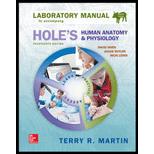
Concept explainers
Single penny tossed 20 times and counting heads and tails:
Probability (prediction): _______/20 heads ________/20 tails
(Note: Traditionally, probabilities are converted to the lowest fractional representation.)
Actual results: ______heads ______tails
Class totals: ______heads ______tails
To analyze:
Single penny tossed 20 times and counting the heads and tails.
Introduction:
Probability__10__/20 heads__ 10_/20 tails
Actual rates _1___heads
Class result 19__tails.
Probability are written as number between zero and one.
Probability of one means that the event is certain.
Explanation of Solution
Tossing a coin 20 times can give 2 outcomes.
So, the probability of getting at least one head
.There will be exactly one case in which tails. no heads show up
Therefore, the probability of getting one head at least one heads is
The probability of single penny tossed of any one of them is
Probability 10 /20 heads 10/20tails so actual rates 1heads and class result 19 tails.
One head only out of 20 tossed. So class result will be 19 tails.
Single penny tossed 20 times and counting heads1and tails 19. So the probability of fraction is
10 /20 heads and 10 /20 tails are converted to the lowest fractional representation.
Want to see more full solutions like this?
Chapter 53 Solutions
Laboratory Manual for Holes Human Anatomy & Physiology Fetal Pig Version
Additional Science Textbook Solutions
Chemistry
Fundamentals Of Thermodynamics
Microbiology Fundamentals: A Clinical Approach
Human Physiology: An Integrated Approach (8th Edition)
- What is behavioral adaptarrow_forward22. Which of the following mutant proteins is expected to have a dominant negative effect when over- expressed in normal cells? a. mutant PI3-kinase that lacks the SH2 domain but retains the kinase function b. mutant Grb2 protein that cannot bind to RTK c. mutant RTK that lacks the extracellular domain d. mutant PDK that has the PH domain but lost the kinase function e. all of the abovearrow_forwardWhat is the label ?arrow_forward
- Can you described the image? Can you explain the question as well their answer and how to get to an answer to an problem like this?arrow_forwardglg 112 mid unit assignment Identifying melting processesarrow_forwardGive only the mode of inheritance consistent with all three pedigrees and only two reasons that support this, nothing more, (it shouldn't take too long)arrow_forward
- Oarrow_forwardDescribe the principle of homeostasis.arrow_forwardExplain how the hormones of the glands listed below travel around the body to target organs and tissues : Pituitary gland Hypothalamus Thyroid Parathyroid Adrenal Pineal Pancreas(islets of langerhans) Gonads (testes and ovaries) Placentaarrow_forward

 Human Biology (MindTap Course List)BiologyISBN:9781305112100Author:Cecie Starr, Beverly McMillanPublisher:Cengage Learning
Human Biology (MindTap Course List)BiologyISBN:9781305112100Author:Cecie Starr, Beverly McMillanPublisher:Cengage Learning Human Heredity: Principles and Issues (MindTap Co...BiologyISBN:9781305251052Author:Michael CummingsPublisher:Cengage Learning
Human Heredity: Principles and Issues (MindTap Co...BiologyISBN:9781305251052Author:Michael CummingsPublisher:Cengage Learning





